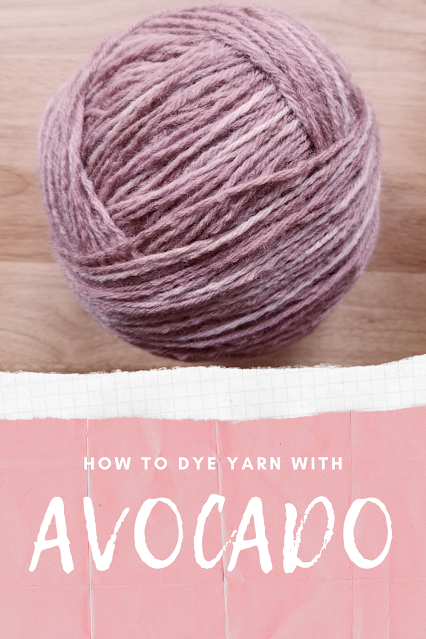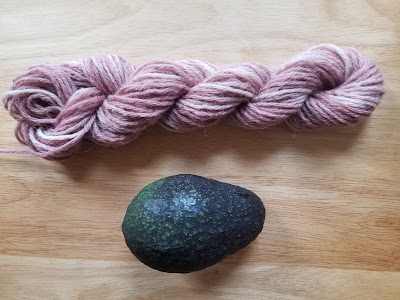My toddler just helped me dye some yarn for his upcoming sweater! Yep, really. My 1.5-year-old "hand-painted" the yarn in a big plastic bin with food coloring and squeeze bottles, obviously with significant guidance from me to keep the mess relatively contained. After he went to bed for the night, I heat-set the colors with vinegar and my yarn-dyeing kettle on the stovetop. This was a super fun activity for him (wait, Mama is ENCOURAGING me to make a mess?) and my first post-baby foray back into yarn dyeing, which I have been missing very much.
We used Lion Brand Wool-Ease, which fit all our various criteria. Most importantly, the dye had to be child-safe, so no strong chemicals. Food coloring or Kool-Aid were the only two dyes that I was willing to put in a toddler's hands, meaning we needed to dye animal fiber. For cost reasons, that animal fiber was wool, because I wasn't going to experiment with anything expensive. And finally, because I want him to wear the sweater that I eventually make with it, I needed a soft, non-itchy, and machine-washable yarn. I love the acrylic-wool blend Wool-Ease for its comfortable texture, durability, and much cheaper price than pure wools that are washable and soft. As a huge bonus, since only the wool content (20%) of the Wool-Ease takes dye, the resulting color is less intense than obtained from dyeing pure wool -- this is helpful when dyeing with food coloring which can give super bright, borderline garish colors on wool. Oh, and it's easier to heat-set Wool-Ease without felting, which is good for sleep-deprived parents.
For the cardigan I am planning to make, I skeined up approximately 3.5 balls of Wool-Ease for this dye batch. I knew it would be a little crowded in the kettle, but that was ok with me as I wasn't going for a uniform color. Here is the yarn pre-soaking in a plastic bin in the bathtub.
To avoid a brown mess, I limited the color selection to two main colors, blue and green. I had two squeeze bottles, so we started with one bottle of each and refilled those as we went along. I also had two different brands of food coloring, one regular and one gel, so we used both greens and both blues for slightly different shades to keep things interesting. Even so, my toddler quickly realized I was holding out on some of the colors so he tried to climb up and help himself to "purple," so I mixed up a purple batch with one drop of red in the next blue bottle. I made the bottles pretty concentrated, with 5 drops of gel food coloring or 7 drops of regular food coloring in each one and the yarn looked pretty well covered when we were done. Unfortunately, with all the chaos and demands for "more more" dye, I didn't get any pictures of the yarn-painting process, and I totally forgot to take pictures of the yarn in the plastic bin before moving it to the kettle (blame that sleep deprivation I mentioned earlier).
To heat-set the dye with vinegar, I ended up doing five heatings. For each, I heated the kettle until it just began to boil, covered the lid, turned off the heat, and let the bath sit until the water became clear. The first heating exhausted the hand-painted dye quickly, within 30 minutes. Even though I thought we had used a lot of food coloring in the squeeze bottles, the yarn was a very light pastel after this first heat. So I added another 5-ish drops of food coloring per 3oz of yarn, basically kettle-dyeing at this point but following the general color scheme already painted into the yarn. Then I heated again and let the dye exhaust, up to the fifth time. I was surprised at how much food coloring the yarn keep taking up, but by the fifth exhaustion (the next morning) I thought the yarn looked bright enough, so I let it sit and cool for the rest of the day before washing. Altogether we used about 40 drops of Dollar Tree food coloring and 10 drops of Wilton gel food coloring per 3oz of yarn. The colors held fast during rinsing and gentle wash with baby shampoo.
While I am very happy with how the yarn turned out and my toddler loved the activity, there was substantial artistic input from me in the kettle-dye to get the yarn more vibrantly colored, so I plan to experiment in future rounds to keep more of the toddler-painted look. We will be doing this again soon with more yarn for a matching Mama-sized cardigan, and I will try including vinegar in the pre-soak, letting him paint the yarn directly in the (unheated) pot, using more dye in the squeeze bottles, and adding less water in the heat-setting process to reduce letting the colors run in the dyebath or needing to add more dye to the kettle.
Materials:
- Animal fiber yarn of desired quantity (highly recommend Wool-Ease)
- Scrap yarn for ties
- Large plastic bin or bucket, ideally clear
- Bathtub or outdoor space
- Plastic squeeze bottles
- Food coloring
- White vinegar
- Dedicated pot used for dyeing (not used for food)
- Disposable chopsticks or tongs (not used for food) for manipulating yarn in dyebath
Prep before toddler/child gets involved:
- Wind yarn into loose skeins. Tye loosely in 4-5 spots around the skein (I use scraps of bright-colored acrylic yarn for ties).
- Place yarn in plastic bin and submerge completely in room temperature water. You may place toys or other objects on top of the yarn to weight it down so it doesn't float. Let soak for at least 30 minutes.
- Place plastic bin in bathtub or outdoors, wherever you are ok with a bit of food coloring spillage.
- Fill plastic squeeze bottles with water and food coloring. I had small bottles and used about 5-7 drops of food coloring per bottle (and we refilled several times, for a total of about 12-15 bottles worth of dye). I brought the food coloring with us into the bathroom so it was easier to refill the bottles as we used them up.
Toddler/child activity portion:
- Give toddler/child squeeze bottles to squeeze the dye onto the yarn. Younger toddlers may need more guidance to help squeeze onto the yarn instead of all over the room.
- Encourage or help toddler/child to cover all the yarn with dye. If necessary and desired, you can also dip the undyed sections in dye later.
Steps after toddler/child art is completed:
- Obviously, please keep children safely away from hot stoves and kettles.
- Transfer yarn to yarn-dyeing kettle. Add enough water and vinegar (about 1 part vinegar to 10 parts water) to just cover the yarn and place on stovetop. Turn on the heat until water just begins to simmer, then cover pot and turn off heat. Let sit for at least 30 minutes before opening lid to check.
- Wait until dye is exhausted, when the water in the dyebath is clear and uncolored.
- Lift a small section of yarn out of the water to inspect -- if it looks dark/vibrant enough for you, then move to next step. Note that the color will lighten when the yarn dries (see example photo below). If not colorful enough, then add food coloring to dyebath, use tongs or chopsticks to gently distribute the dye around all the yarn, and repeat previous 2 steps.
- When happy with the yarn's color saturation, let the kettle and yarn cool completely to room temperature.
- Remove yarn from kettle and rinse well until water runs completely clear. Washing with gentle yarn soap at this point is optional but recommended.
- Hang until completely dry.
- Twist into neat skeins or wind into loose balls for storage.
A final note: in the photo below, I wet a small section of the dried yarn to demonstrate the color saturation and shade difference. The change from wet to dry is definitely noticeable and is something to keep in mind when you're deciding when to stop adding more dye in the pot!





























